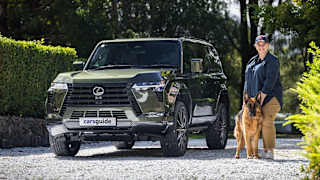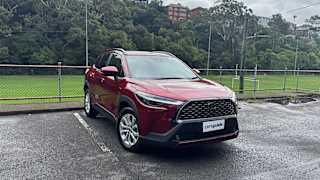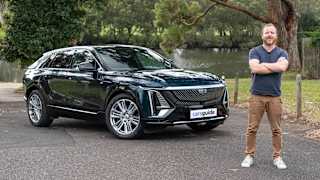Does the e-tron live up to the promise set by sporty Audis which have come before it? The answer is interesting.
There is no doubt the e-tron S is rapid, at times absurdly so. If you stick it in the required S mode and hunker the suspension down, planting the accelerator makes its claimed 0-100km/h sprint time of 4.5 seconds suddenly very real.
It lurches ahead without so much as a squeak from its enormous tyres, grabbing the road with its front axle as it warps you forward.
So yes, this electric performance car is no doubt quick. It is also heavy. Weighing in at a tare mass of 2830kg, the e-tron S is quite literally massive.
The trouble is, while its powerful electric motors are great at overcoming this gravitational obstacle in a straight line, it’s in the corners and at low speeds where you feel every bit of it.
The e-tron crashes over larger bumps, it’s suspension struggling to deal with the combination of its weight and low-profile tyres, while it can also feel cumbersome in the corners around town.
The suspension is better at levelling things out once you gain a bit of pace, and the tyres work with the all-wheel drive system to put in a Herculean effort when carving up bends at speed, but there’s the ever-present lurch of weight always working against you.
This feeling isn’t helped by the steering tune, which even in its most comfort-oriented setting feels hefty and slow to turn. In the default sport mode, ‘dynamic’, it takes effort to push this car around corners.
Despite the unsettling feeling of it, though, the car holds on for dear life, and I never once felt as though the tyres were remotely in danger of breaking traction when put under pressure.
Is it a performer, then? Absolutely, there’s something mind bending about a vehicle so heavy going so quickly.
Does it feel fun to drive? Less so. I enjoyed the connectivity of the Porsche Taycan offers at speed more than I enjoyed the e-tron S, and its weight and girth demand a nice wide piece of tarmac for you to really wring it.
It’s far from a darty and engaging car like the Q5 can be despite its mammoth power outputs.
Elsewhere, the drive experience feels very Audi, though. The touchpoints and feedback are mostly familiar, as are the software and ergonomics.
The virtual wing mirrors are more of an inconvenience than anything else. This car is already hard to see out of, with big C-pillars and a tall belt line, and the digital exterior mirrors offer what feels like a limited angle of vision and make it extra hard to see out at night.
Some things fall to the wayside a little. The e-tron’s drive system almost hides the regenerative braking setting several menus deep, which, once activated, allows you to set it using the paddle-shifters on the wheel.
Audi says the regen will account for nearly 30 per cent of the car’s range, which is odd because even at the highest setting it feels a bit mild, relying on the user to manually operate the brake for a ‘blended braking’ mode to make up the difference.
It’s a bit of a stretch from the single-pedal driving modes offered on some rival cars.
My theory here, as with this car’s look and feel, is the e-tron is primarily designed to be familiar to an existing Audi customer, or someone coming out of a purely combustion premium rival.







